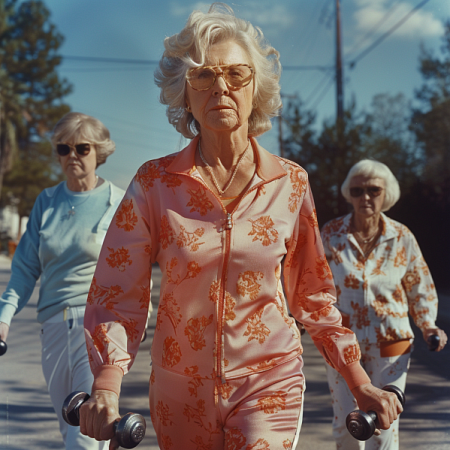Understanding the importance of exercise modification when dealing with an injury is crucial. Continuing to move, even with limitations, can aid recovery, prevent muscle atrophy, and improve overall mood. This blog post will explore how to modify workouts for common injuries, with expert guidance from physiotherapists and podiatrists. By implementing these strategies, individuals can stay active, promote healing, and ultimately return to their desired fitness levels.
The key to successful injury recovery lies in a combination of rest, targeted exercise, and professional guidance. Physiotherapists and podiatrists play a vital role in assessing injuries, developing personalised exercise plans, and monitoring progress. By working closely with these healthcare professionals, individuals can create a safe and effective approach to managing their injury while maintaining an active lifestyle.

Understanding the Importance of Exercise Modification
The decision to stop exercising altogether when faced with an injury can be tempting, but it's often not the best approach. In fact, carefully modified exercise can play a crucial role in the recovery process. Continued physical activity helps to maintain muscle strength and endurance, improve circulation, and enhance overall mood. These factors contribute to a faster recovery and reduced risk of complications.
However, it's essential to approach exercise with caution when injured. Pushing through pain or ignoring the body's signals can lead to further damage and prolonged healing time. This is where the expertise of physiotherapists and podiatrists becomes invaluable. These healthcare professionals can assess the injury, determine appropriate exercise modifications, and provide guidance throughout the recovery process.
By working closely with a physiotherapist or podiatrist, individuals can create a tailored exercise plan that promotes healing while minimizing the risk of re-injury. This collaborative approach ensures that the exercise regimen aligns with the specific needs of the injury, allowing for safe and effective progress.

Common Injuries and Exercise Modifications
Understanding the specific demands placed on different parts of the body during exercise is essential for developing effective modifications. Some of the most common exercise-related injuries include those affecting the shoulders, knees, back, and feet and ankles.
Shoulder Injuries
Shoulder injuries, such as rotator cuff tears, impingement, and dislocations, can significantly impact an individual's ability to perform overhead movements. Modifications might involve avoiding exercises that elevate the arm above shoulder height, reducing weight load, and focusing on strengthening the stabilising muscles of the shoulder.
Knee Injuries
The knee is a complex joint susceptible to various injuries, including ACL, MCL, and PCL tears, meniscus tears, and patellofemoral pain syndrome. Depending on the severity of the injury, modifications may include reducing impact activities, incorporating exercises to strengthen the muscles around the knee, and improving flexibility.
Back Injuries
Lower back pain and herniated discs are common complaints among exercise enthusiasts. Modifying exercises to reduce spinal load, such as avoiding heavy lifting and excessive bending, can be beneficial. Core strengthening exercises and improving posture are also crucial components of a back injury rehabilitation program.
Foot and Ankle Injuries
Plantar fasciitis, Achilles tendonitis, and ankle sprains are frequent foot and ankle ailments. Exercises that reduce impact on the feet, such as swimming or cycling, may be suitable. Strengthening the muscles of the foot and ankle, as well as improving flexibility, can also aid in recovery.
It's important to note that these are general guidelines, and individualised exercise plans should be developed in consultation with a physiotherapist or podiatrist.

Seeking Professional Guidance
When dealing with an injury, seeking professional guidance is essential. Physiotherapists and podiatrists are highly trained healthcare professionals who specialize in musculoskeletal and foot and ankle conditions, respectively. Their expertise is invaluable in assessing injuries, developing personalized treatment plans, and guiding individuals through the recovery process.
Clinics like AppliedMotion offer comprehensive injury care, providing both physiotherapy and podiatry services under one roof. Their physiotherapists employ a variety of techniques, including manual therapy, exercise prescription, and education, to reduce pain, improve mobility, and restore function. Podiatrists focus on the foot and ankle, diagnosing and treating conditions that affect these areas. They provide expert advice on footwear, orthotics, and exercises to promote healing.
By choosing to seek professional guidance, individuals benefit from a comprehensive approach to injury management. Their team of professionals accurately diagnose injuries, identify underlying factors, and develop tailored exercise plans to facilitate recovery. Regular assessments and progress monitoring are crucial components of the rehabilitation process. With ongoing support and motivation, patients can achieve optimal recovery outcomes.
Creating a Modified Workout Routine
Developing a suitable workout routine when dealing with an injury requires careful consideration. The goal is to maintain fitness levels while promoting healing and preventing further damage. A well-structured plan should incorporate a balance of cardio, strength training, flexibility, and balance exercises.
Warm-up and Cool-down Modifications
Warming up and cooling down are essential components of any workout, even when injured. However, modifications may be necessary to accommodate limitations. Gentle movements such as arm circles, leg swings, and ankle rotations can be incorporated into the warm-up. Cooling down activities like static stretches can help improve flexibility and reduce muscle tension.
Cardio Exercise Alternatives
Cardiovascular exercise is important for overall health, but high-impact activities may need to be adjusted. Low-impact options such as swimming, cycling, or elliptical training can be beneficial. Water-based exercises can be particularly helpful as the buoyancy of the water reduces joint stress.
Strength Training Adjustments
Strength training is crucial for building muscle and supporting injured areas. However, the focus should be on strengthening the muscles surrounding the injured area rather than directly targeting it. For example, if you have a knee injury, exercises that strengthen the quadriceps and hamstrings can be beneficial. Resistance bands or light weights can be used to provide resistance without excessive strain.
Flexibility and Balance Exercises
Improving flexibility and balance is essential for injury prevention and recovery. Gentle stretching and balance exercises can help to maintain range of motion and stability. Yoga and Pilates can be excellent options for incorporating these elements into a workout routine.
Sample Workout Routines
Creating a sample workout routine can be helpful, but it's important to remember that individual needs vary. A physiotherapist or podiatrist can provide tailored recommendations based on the specific injury and individual goals.
A general workout structure might include:
-
Warm-up (5-10 minutes)
-
Cardio (20-30 minutes)
-
Strength training (20-30 minutes)
-
Flexibility and balance (10-15 minutes)
-
Cool-down (5 minutes)
It's essential to listen to your body and adjust the workout as needed. Gradually increasing the intensity and duration of exercise is recommended as the injury heals.

Preventing Re-injury
One of the primary goals of exercise modification is to prevent re-injury. By following a structured rehabilitation plan and incorporating specific strategies, individuals can reduce the risk of experiencing the same injury again.
Listening to your body is paramount. Pain is a signal that something is wrong, and it's essential to heed this warning. Pushing through pain can lead to setbacks and prolonged recovery time. It's important to differentiate between discomfort and pain. Some discomfort is normal during exercise, but sharp or persistent pain should be addressed.
Gradually returning to regular exercise is crucial. Building up intensity and duration slowly allows the body to adapt and strengthen the injured area. Rushing the process can increase the risk of re-injury. It's essential to listen to your body and adjust the exercise routine accordingly.
Proper form and technique are vital for preventing injuries. Engaging in exercises with correct form reduces strain on the body and helps to distribute forces evenly. Physiotherapists and podiatrists can provide guidance on proper form and technique for specific exercises.
The role of physiotherapy and podiatry in preventing re-injury cannot be overstated. These professionals can assess the injury, identify potential risk factors, and develop a rehabilitation plan to address weaknesses and imbalances. By working closely with these healthcare providers, individuals can enhance their chances of a full and lasting recovery.
Exercise modification is a valuable tool for managing injuries and promoting healing. By understanding the importance of exercise, seeking professional guidance, and following a structured rehabilitation plan, individuals can overcome injuries and return to an active lifestyle. Remember, patience, consistency, and a focus on prevention are key to a successful recovery.
Reclaim Your Active Life
Injuries can be setbacks, but they don't have to define your fitness journey. By understanding the importance of exercise modification, seeking expert guidance, and implementing a well-structured plan, you can effectively manage your injury while staying active. Remember, patience and consistency are key to a successful recovery.
Prioritise listening to your body, gradually increasing exercise intensity, and maintaining proper form. With the right approach, you can overcome challenges, prevent re-injury, and ultimately return to enjoying the physical activities you love.
Remember, your body is capable of remarkable healing. By combining rest, targeted exercise, and professional care, you can empower yourself to reclaim your active lifestyle.








